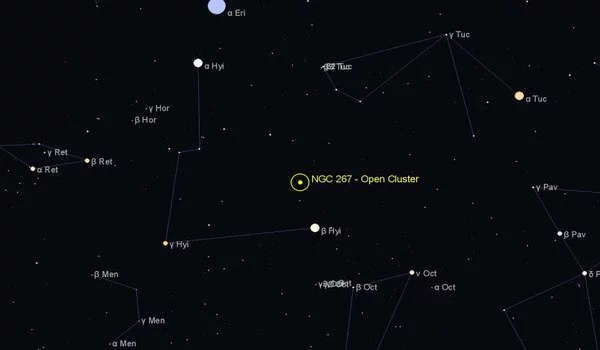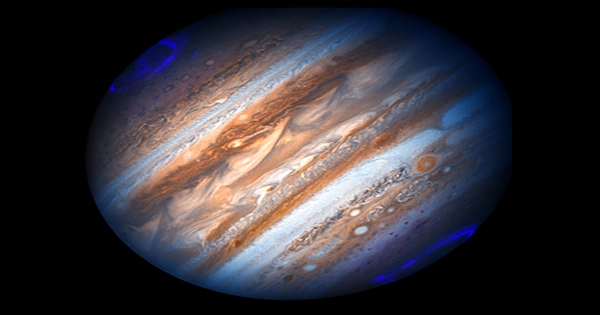NGC 267 is an open cluster in the Small Magellanic Cloud. It is found in the constellation Tucana. It is a dwarf galaxy that circles our Milky Way galaxy. This celestial object is part of the magnificent tapestry of stars and star clusters that adorn the SMC, which is one of the Milky Way’s satellite galaxies and is located in the sky’s southern hemisphere. On October 4, 1836, John Herschel discovered it.
Here are some key characteristics and details about NGC 267:
- Location: It is located within the Small Magellanic Cloud, making it relatively distant from Earth. The SMC is approximately 200,000 light-years away from our Milky Way galaxy.
- Stellar Composition: It, like other open clusters, is mostly made up of young stars that evolved from the same molecular cloud of gas and dust. These stars are typically less than a few hundred million years old. They are nevertheless relatively close together when compared to the usual gap between stars in the galaxy, giving the cluster its characteristic look.
- Size and Brightness: It can vary in size and brightness, as well as in the number of stars it includes. Open clusters like NGC 267 can have a few dozen to several hundred stars. The combined luminosity and distribution of the cluster’s constituent stars define its overall brightness and size.
- Evolution: Open clusters, such as NGC 267, will disperse over time as its constituent stars are influenced by gravitational interactions with other celestial objects and galactic tidal forces. As a result, open clusters have a finite lifespan and eventually disintegrate, with their stars merging into the SMC’s general stellar population.
Observational Significance
The features, evolution, and dynamics of star clusters and galaxies are of special interest to astronomers and astrophysicists investigating NGC 267 and other objects in the Small Magellanic Cloud. Scientists can learn about the birth and evolution of stars and galaxies by examining open clusters in various environments.
NGC 267 is a fascinating illustration of the many and varied astronomical phenomena that exist in our cosmos. While it is not as well-known as some other celestial objects, its presence within the Small Magellanic Cloud helps us grasp the larger cosmic environment.
















